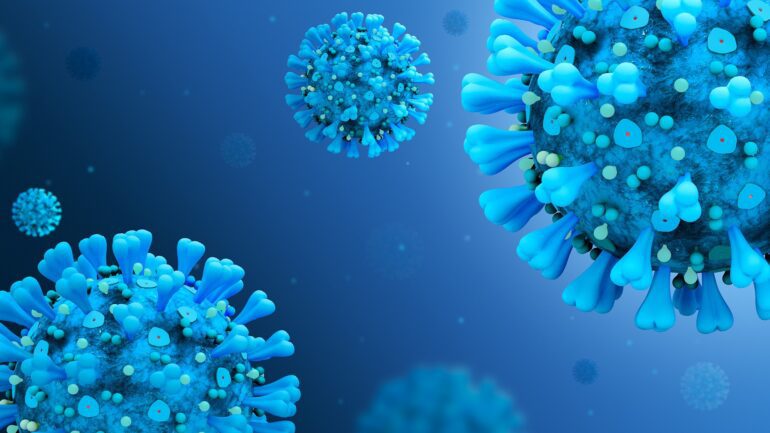TL;DR:
- Researchers at the University of Alberta employ multiomic profiling and machine learning to identify potential prognostic biomarkers for long COVID.
- Multiomic analysis includes blood plasma proteins, metabolomics, cytokines, and growth factor profiling.
- A predictive model, comprising seven cytokines and 13 metabolites, demonstrates an 83% accuracy rate in predicting adverse outcomes post-SARS-CoV-2 infection.
- Findings shed light on distinct biological processes during convalescence and suggest various treatment strategies.
- Market implications: Potential for the development of targeted therapies and biomarkers for long COVID patients.
Main AI News:
In a pioneering endeavor at the University of Alberta, a team of researchers has harnessed the power of multiomic profiling, complemented by cutting-edge machine learning techniques, to pinpoint potential prognostic biomarkers intricately linked to the pivotal clinical aspects of post-acute sequelae of COVID-19 (PASC), more commonly known as “long COVID.”
The team harnessed machine learning algorithms to extract profound insights into the various PASC phenotypes. These insights were derived from the intricate alterations within multiomic signatures. Subsequently, they meticulously crafted a streamlined panel of molecules closely associated with long-term clinical outcomes. Gavin Oudit, a distinguished researcher in cardiology and physiology at the University of Alberta, and his esteemed colleagues, elucidated these findings in their recent publication in Cell Reports Medicine.
As part of the extensive COVID-19 Surveillance Collaboration study, the researchers embarked on a comprehensive journey. They conducted targeted liquid chromatography-multiple reaction monitoring-mass spectroscopy profiling of a staggering 274 blood plasma proteins. Additionally, they delved into the realm of targeted plasma metabolomics, employing state-of-the-art mass spectroscopy and liquid chromatography-tandem mass spec. Their investigative prowess extended further into multiplexed Luminex xMAP-based cytokine and growth factor profiling. This intricate analysis encompassed blood plasma samples procured from 117 individuals undergoing treatment for acute-stage, PCR-confirmed SARS-CoV-2 infections at the University of Alberta Hospital.
Among these individuals were 20 patients who found themselves in intensive care units, alongside 97 patients receiving treatment in COVID-19 wards. This comprehensive study period spanned from the fall of 2020 to late June of 2021, encapsulating Canada’s tumultuous second and third pandemic waves.
In conjunction with similar profiles extracted from blood samples obtained from 28 healthy control subjects, the research also included blood samples collected six months post-recovery from 30 COVID-19 patients. Furthermore, they analyzed samples from 32 individuals with mild PASC and 55 individuals grappling with severe PASC. This multiomic treasure trove enabled the researchers to unearth markers that bore relevance to all-cause mortality, hospitalization, or PASC.
Having successfully identified three distinct groups of individuals, each distinguished by the molecules under scrutiny, the team constructed a prognostic model. This model incorporated a sophisticated amalgamation of seven cytokines and 13 metabolites. It stood as a predictive set of biomarkers enriched with components related to T-cell exhaustion and energy metabolism. Remarkably, this model displayed a remarkable 83 percent accuracy rate in identifying individuals susceptible to adverse outcomes subsequent to an acute SARS-CoV-2 infection.
The researchers emphasize that their study sheds light on crucial biological processes during convalescence, which significantly deviate from those observed during acute infection. Their findings provide crucial support for the development of targeted therapies and the discovery of biomarkers specifically tailored to patients grappling with long COVID.
More broadly, their results signify that individuals who eventually develop long COVID experience convalescent periods marked by distinctive inflammation, platelet degranulation and/or coagulation processes, altered energy metabolism, gut dysbiosis, and shifts in amino acid metabolism. These revelations open doors to a plethora of potential treatment strategies, spanning from anti-inflammatory or anticoagulation interventions to antioxidant or taurine amino acid supplementation approaches.
In a world where proven effective therapies for long COVID remain elusive, the results of this groundbreaking study suggest multiple avenues for exploration in future research. The authors emphasize the necessity of large prospective cohorts to validate the identified biomarkers and molecular pathways underlying long COVID pathophysiology. Furthermore, they stress the importance of evaluating the efficacy of the identified therapeutic targets, potentially paving the way for inclusion in clinical trials.
Conclusion:
The groundbreaking multiomic analysis conducted by the University of Alberta team not only sheds light on crucial biomarkers for long COVID but also provides insights into distinct biological processes during the convalescence phase. These findings have significant implications for the medical market, suggesting the potential development of targeted therapies and biomarkers for long COVID patients, addressing a pressing need in the healthcare sector. Moreover, the identification of specific treatment strategies opens up new avenues for research and product development, creating opportunities for companies in the pharmaceutical and healthcare industries.

